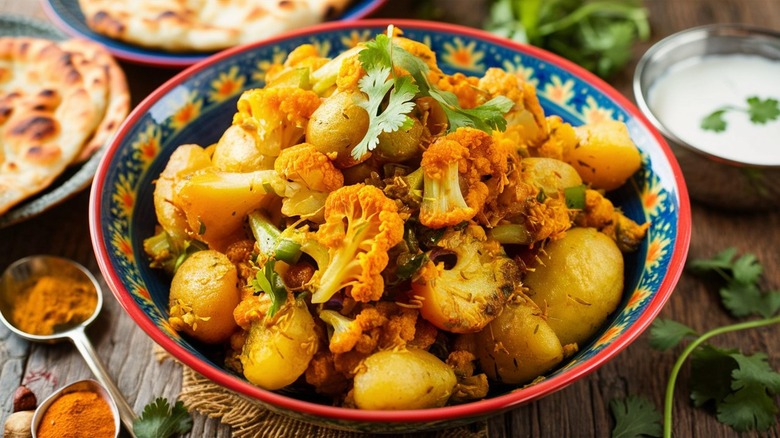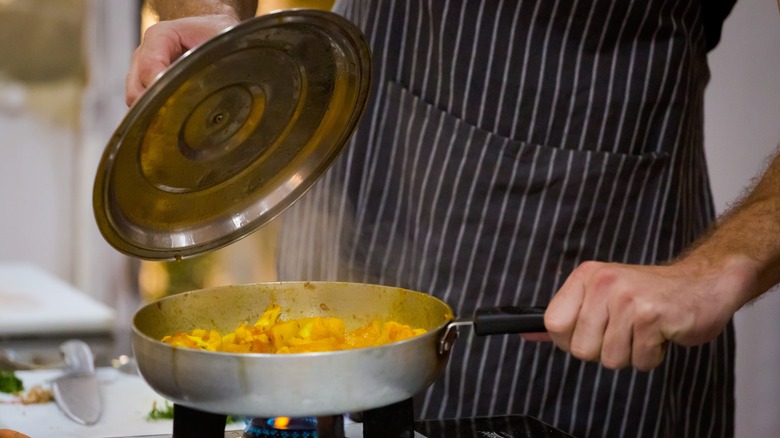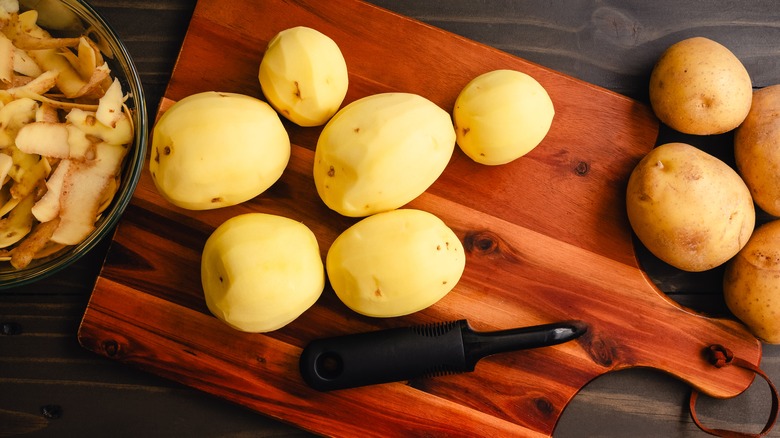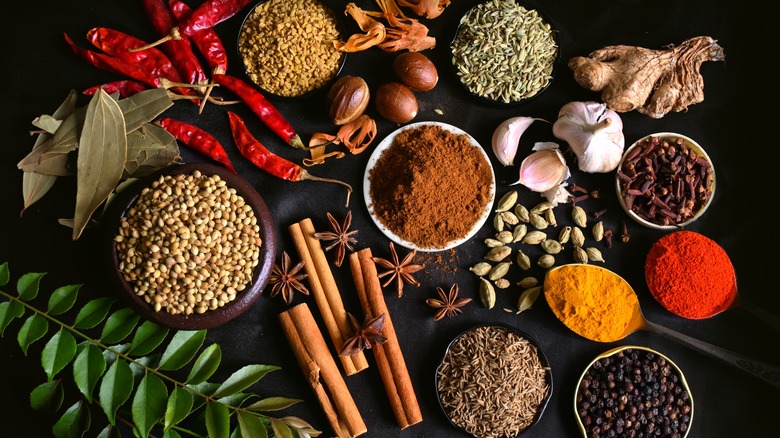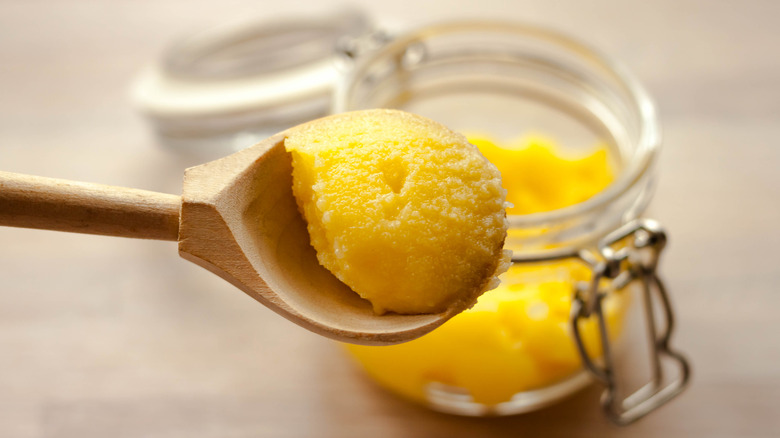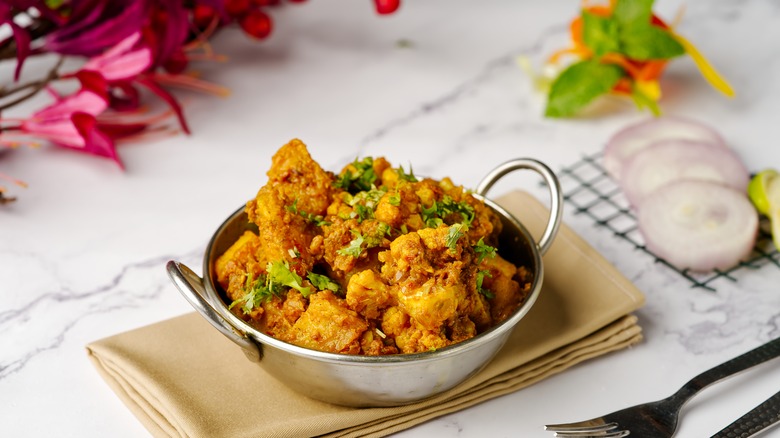Top Tips From An Expert For Making Perfect Homemade Aloo Gobi
A celebrated chef, Varun Inamdar worked his way through the ranks from dishwasher to becoming the chosen chef for India's Prime Minister Narendra Modi, cooking for such distinguished guests as Barack Obama, Nicolas Sarkozy, and Queen Rania Al Abdullah. Affectionately known as The Bombay Chef and The Prince of Chocolates, Inamdar's talents have led him to garner two National Awards, setting a Guinness World Record for a 3,000-pound Mud Pie, and command a wide digital audience on YouTube.
Inamdar is also the author of "Celebrate Life Food and Wine," and the chef and owner of three restaurants celebrating North Indian cuisine; 27 Degrees West in Singapore, Anokhi Bar & Grill in Shanghai, and New Light Restaurant & Bakery in Sopore, Kashmir. Drawn by his culinary acumen and expertise, we reached out to chef Inamdar asking his advice on how to make a delicious, homemade aloo gobi, one of India's most popular dishes.
Aloo gobi, an emblematic dish of Indian cuisine
The cuisine of India is as diverse as its peoples, though many Western cultures describe it as earthy, spicy, rich, and aromatic. While approximately 40% of Indians consider themselves to be vegetarian, an increasing number indulge in meat, particularly chicken and lamb, though it is still limited in their diet.
Aloo gobi, one of the most popular dishes in India (and the world), is highly representative of the flavors and textures found throughout Indian cuisine. The vegetarian recipe includes bite-sized pieces of cauliflower and potato enrobed in the flavors of garlic, ginger, chile peppers, turmeric, coriander, cumin, and garam masala. While different regions and cooks have alternate ways of preparing aloo gobi, Varun Inamdar has offered several general tips on how to recreate this iconic dish at home.
Preparing the ingredients
Varun Inamdar says "making perfect aloo gobi involves a balance of flavors and textures" and it starts by selecting and preparing your ingredients. For the potatoes, he suggests using "waxy varieties like Yukon Gold for a creamy texture." Other acceptable low starch, moisture rich spud varieties include red potatoes, new potatoes, and fingerling. The famed YouTube chef also wisely suggests using "fresh, firm cauliflower" to achieve the best flavor and texture.
Aloo gobi is a side dish, but the vegetables are the main attraction, so you want to make sure every bite is equally fantastic. "Cut the potatoes and cauliflower into evenly sized pieces to ensure they cook at the same rate," Inamdar advises. "Aim for 1-1 ½ inch pieces." If you have a jumble of different shapes and sizes, the vegetables will cook unevenly resulting in a dish with an unappealing texture. The Bombay Chef also recommends separating and parboiling the cut vegetables for five to seven minutes before frying, further aiding uniform cooking.
Spice it up
If there's one characteristic we all love about Indian food, it would have to be the vibrant spices. Not only are there unique seasoning combinations, they also use a particular method to fully bring out the flavor and aroma of dried herbs and spices. Tempering or blooming is a commonly used technique in India, where dried seasonings are briefly fried in hot oil before adding additional ingredients. "Start by heating oil and tempering with cumin seeds and asafoetida before adding the vegetables," says Varun Inamdar.
Though it differs from recipe to recipe, most of the seasonings often used to make aloo gobi are already in our pantry, such as cinnamon, cloves, cumin, and possibly coriander, but others may not be so familiar. Asafoetida powder (also called hing), a spice Inamdar mentions above, is the dried form of a gum extracted from Ferula, a perennial plant grown in arid climates, native to the Mediterranean and east to central Asia. Though you may not be able to find asafoetida at your local supermarket, it is readily available in specialty Indian grocery stores, plus you can always order it online.
Start cooking
As with any cooking endeavor you want to use the right oil, and with Indian food, nothing is better suited for the task than ghee. It may sound exotic, but ghee is simply the Indian word for clarified butter. Instead of heading out the door to purchase a jar, you can easily make it yourself. Not only does it impart a toasted, nutty flavor, ghee (unlike butter) has a higher smoke point which means it'll be less likely to burn.
If you prefer, vegetable, avocado, or peanut oil will also work well, but don't skimp! Varun Inamdar says to use a generous amount of oil: "Cooking in enough oil helps in achieving a nice texture. It prevents the vegetables from sticking and helps them roast evenly." He also suggests keeping a lid on hand and to use a few tablespoons of water, if needed. "Covering the pan helps to steam the vegetables, making them tender without getting mushy."
A perfect homemade aloo gobi
Before serving the perfect homemade aloo gobi, there are certain desired results, such as the texture and appearance of your vegetables. According to chef Varun Inamdar, the ideal potato is tender, but still holding its shape. "[Potatoes] should be soft and creamy, but not falling apart," and the "cauliflower should be tender yet slightly firm."
Once you've achieved this objective, feel free to plate it up, and finish with fresh herbs. "Add fresh cilantro or green chiles at the end for a pop of flavor," says Inamdar. Though aloo gobi is often served as a side dish, there's nothing stopping you from making it the main course. Serve it with roti or naan, appam, a large dollop of raita (cucumber yogurt sauce), and Jeera rice. Although Indian cuisine may be daunting, even chef Inamdar believes that "great things really take time," advice we should all take to heart, especially while cooking.
